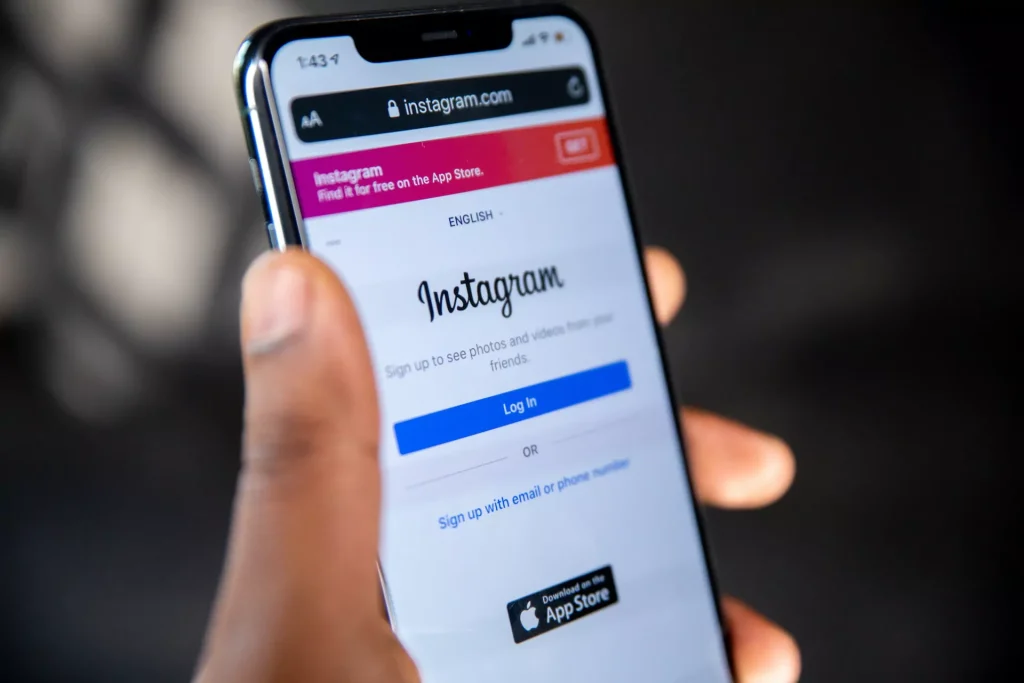Let’s be real: Instagram isn’t just about pretty pictures anymore. Whether you’re an influencer trying to land brand deals, a business growing a loyal following, or just a content lover who posts for fun knowing the lingo matters. And no, this isn’t about looking cool. It’s about actually understanding how this platform works so you can use it to your advantage.
So if you’ve ever felt like someone was speaking another language when they said “shadowban” or “CTR,” don’t stress. I’ve got you. Let’s break down the must-know Instagram terms that every user whether you’ve got 100 followers or 100k should have in their back pocket.
1. Algorithm
Let’s start with the word we love to hate: algorithm. The algorithm is basically Instagram’s brain. It decides what you see on your feed, Explore page, Reels tab everywhere. It takes into account what you like, comment on, save, and watch, then uses that data to show you what it thinks you want more of.
But here’s the kicker: the algorithm changes. Constantly. One day carousels are king, the next it’s Reels. The best thing you can do? Focus on authentic engagement, valuable content, and understanding what your audience actually enjoys.
2. Engagement Rate
You’ve probably seen this term tossed around, especially in the context of brand deals or influencer media kits. Your engagement rate is a percentage that reflects how interactive your audience is. It’s calculated by measuring the total interactions (likes, comments, shares, saves) divided by your follower count, multiplied by 100.
Why does it matter? Because a small creator with 2,000 followers and a killer engagement rate can have more impact than someone with 50k ghost followers. Brands know this. There are tools like Grum’s that help break down these engagement rate figures so you know where you stand.
3. Impressions vs. Reach
People commonly confuse these two, but they’re different.
- Reach = number of unique users who saw your content.
- Impressions = total number of times your content was displayed (including repeat views).
So if your Reel gets 5,000 impressions but 2,500 reach, it means people watched it more than once. Not a bad thing especially if you’re creating sticky, binge-worthy content.
4. Shadowban
Ah, the mysterious shadowban. It’s like Instagram’s version of being grounded: your content still exists, but no one’s seeing it. Shadowbanning happens when the platform restricts your visibility without outright telling you.
Common causes? Overusing hashtags, breaking community rules, or spamming. If your posts cease reaching non-followers and your hashtags seem to be going nowhere, you may be shadowbanned.
Pro tip: Take a break, change your hashtag strategy, and avoid anything too “bot-like.”
5. CTR (Click-Through Rate)
This appears frequently in Stories and link-based postings. The CTR is the ratio of persons who clicked on a link to your site, product, blog, etc. to those who viewed it.
Clicks/Views x 100 = CTR
CTR measures the effectiveness of your calls to action, even if you’re merely advertising your latest piece. A high CTR indicates real interest. A low one? Adjust your strategy.
6. Call-to-Action (CTA)
A Call-to-Action, or CTA, is that little prompt at the end of your caption, Story, or Reel. “Double tap if you agree,” “Save this for later,” “Click the link in bio” all CTAs.
Why do they matter? Because Instagram engagement doesn’t just happen. You have to ask for it. The algorithm favors posts with higher interaction, so don’t be afraid to guide your audience on what to do next.
7. Carousel
A carousel is a post with multiple swipeable images or videos. If you’re not using them, you’re sleeping on one of the best tools for storytelling and boosting time-on-post.
Instagram often re-serves carousel posts to users who didn’t engage the first time meaning more chances to be seen. It’s basically a hack for beating the feed.
Try mixing educational content, tips, behind-the-scenes, or even storytelling formats with your carousels. They work.
8. Creator Account
Instagram has personal, business, and creator accounts. Creator accounts are great for content creators and influencers (or aspiring ones).
They offer access to insights, DM tools, branded content features, and the ability to add a contact button without looking like a business. Plus, you get music access, which business accounts often lose out on.
Switching to a creator account doesn’t kill your reach in fact, it can help you understand your audience better.
9. Insights
Think of Insights as your backstage pass to what’s actually happening with your content. Who’s watching? Where are they from? When are they online?
You can get insights for your posts, Stories, Reels, and profile. Check reach, interactions, saves, and profile visits to determine what works.
It’s not about obsessing over numbers, it’s about making smart, informed moves.
10. User-Generated Content (UGC)
UGC is any content photo, video, Story, etc. that your audience creates and shares about your brand or product. It’s authentic, relatable, and powerful.
Even if you’re not a brand, reposting UGC from your community (with permission, always!) helps build trust and deeper connections. It shows you’re engaged and that people actually care enough to post about what you do.
Pro tip: Always tag and credit the original creator.
11. Boosting (a.k.a. Promoting a Post)
Boosting is the process of turning a regular post into a paid ad. It’s not the same as running full-on ads via Meta Ads Manager, but it’s a simpler, quicker way to get more eyeballs on your content.
Should you do it? Only if the post already has good engagement organically. Boosting a flop won’t turn it into a winner. But boosting a post that’s doing well? That’s like giving it a turbo engine.
12. Hashtag Strategy
Hashtags aren’t dead but the way you use them matters. Gone are the days of dumping 30 random tags and hoping for the best.
Now, it’s about using relevant, niche-specific hashtags that actually describe your content. A mix of high, mid, and low-volume hashtags works best. And yes, it’s totally okay to rotate your sets.
There are tools that can help you generate smarter hashtags based on your content and audience but always give them a human touch. You know your vibe better than any bot.
Final Thoughts: Talk Like a Pro, Post Like a Pro
Look, you don’t need to memorize every stat or acronym to succeed on Instagram. But knowing the language of the platform? That’s what separates casual posters from strategic creators. These terms let you post with purpose, examine what works, and evolve in line with your goals.
Knowledge is power, whether you’re establishing your business, interacting with your community, or getting your work seen.
Remember: trends come and go, but figuring out Instagram? That endures.

Oliver Smith is an experienced blogger at Grammar Globe, Oliver Smith, an expert in English grammar and a master of wit, brings language to life with his playful take on puns. Through his works, he weaves humor into the rules of grammar, making learning fun and engaging for readers of all ages. Discover language with a smile!”






